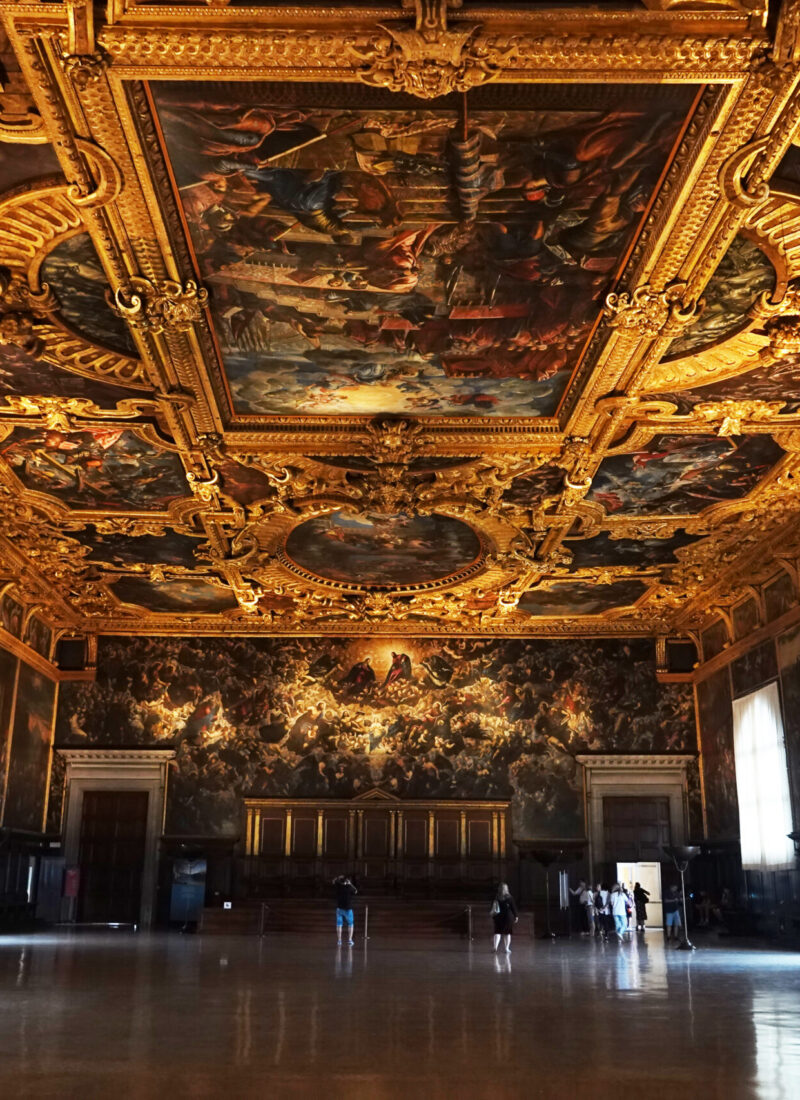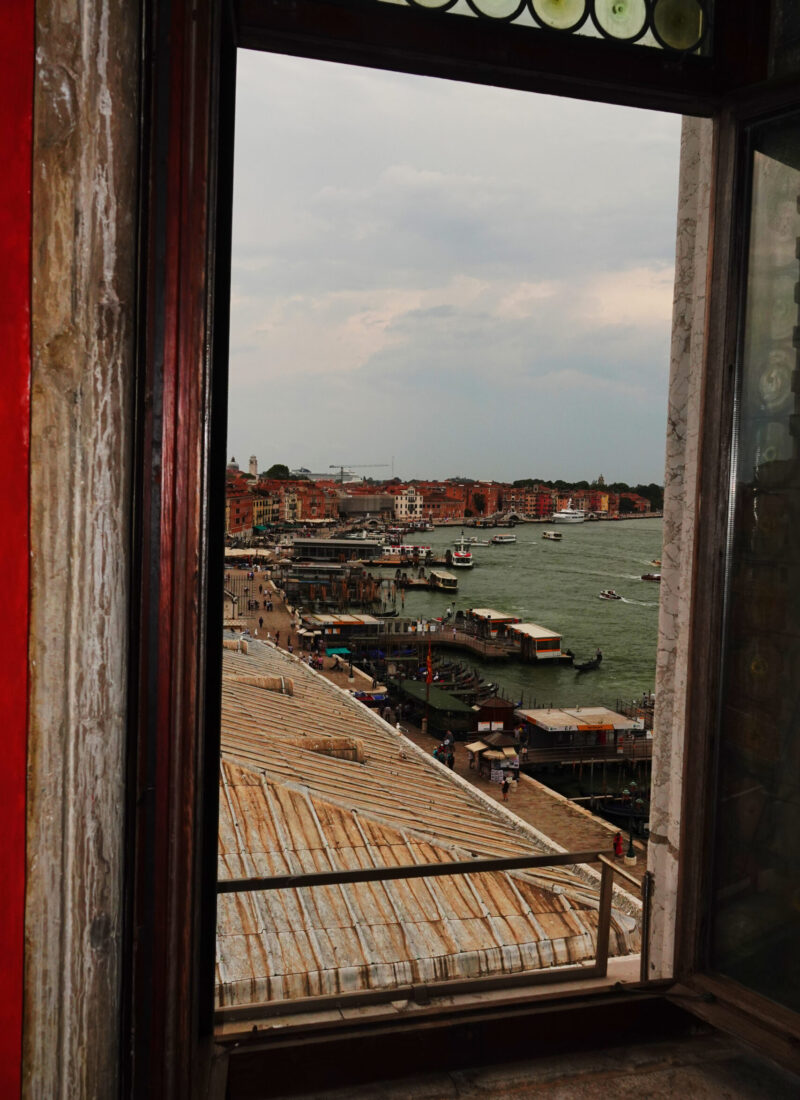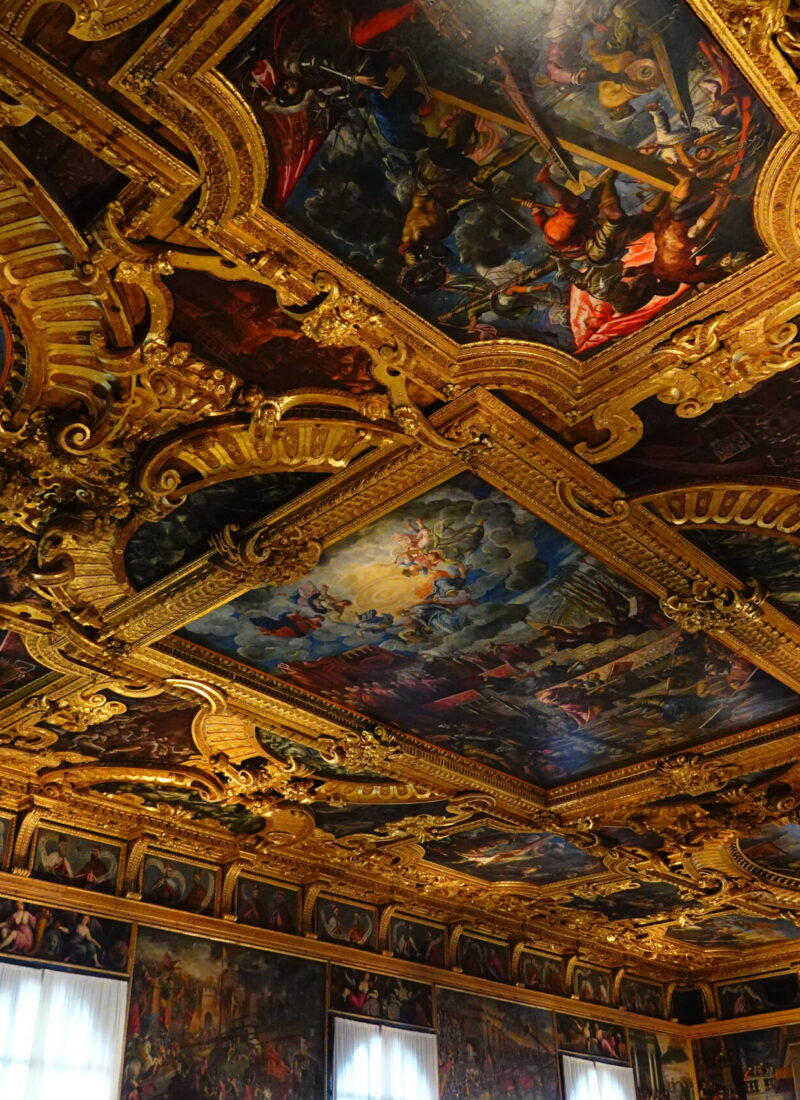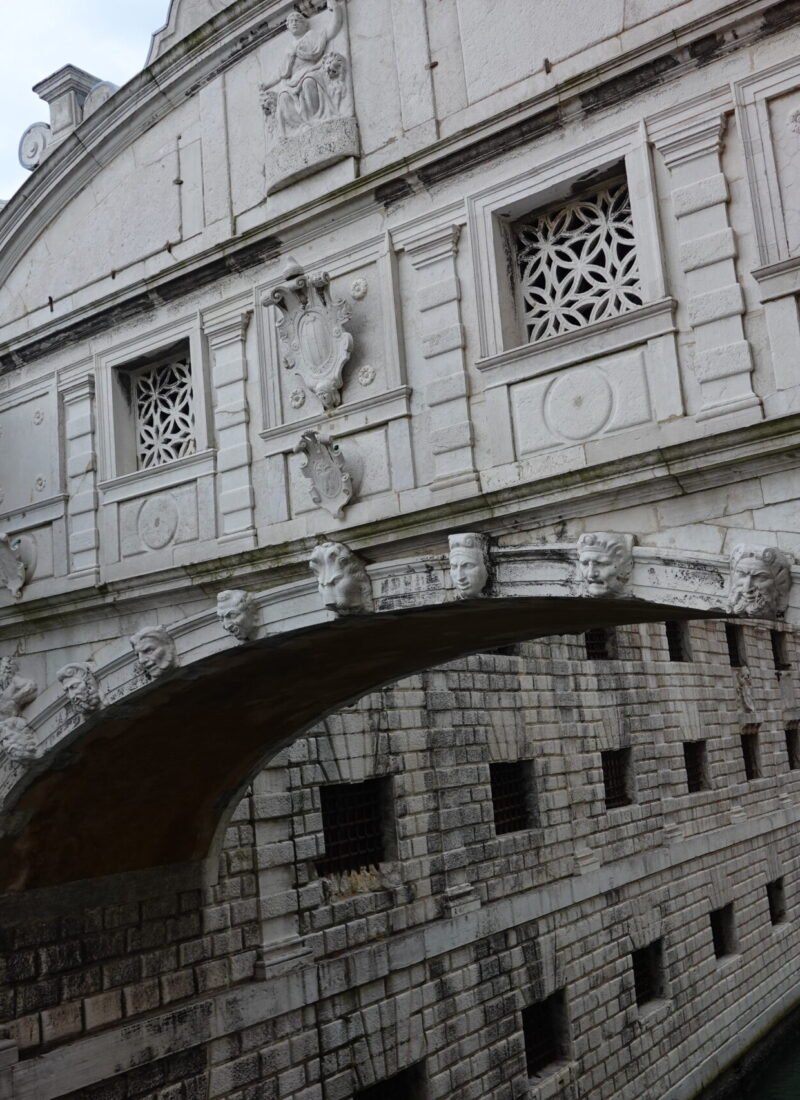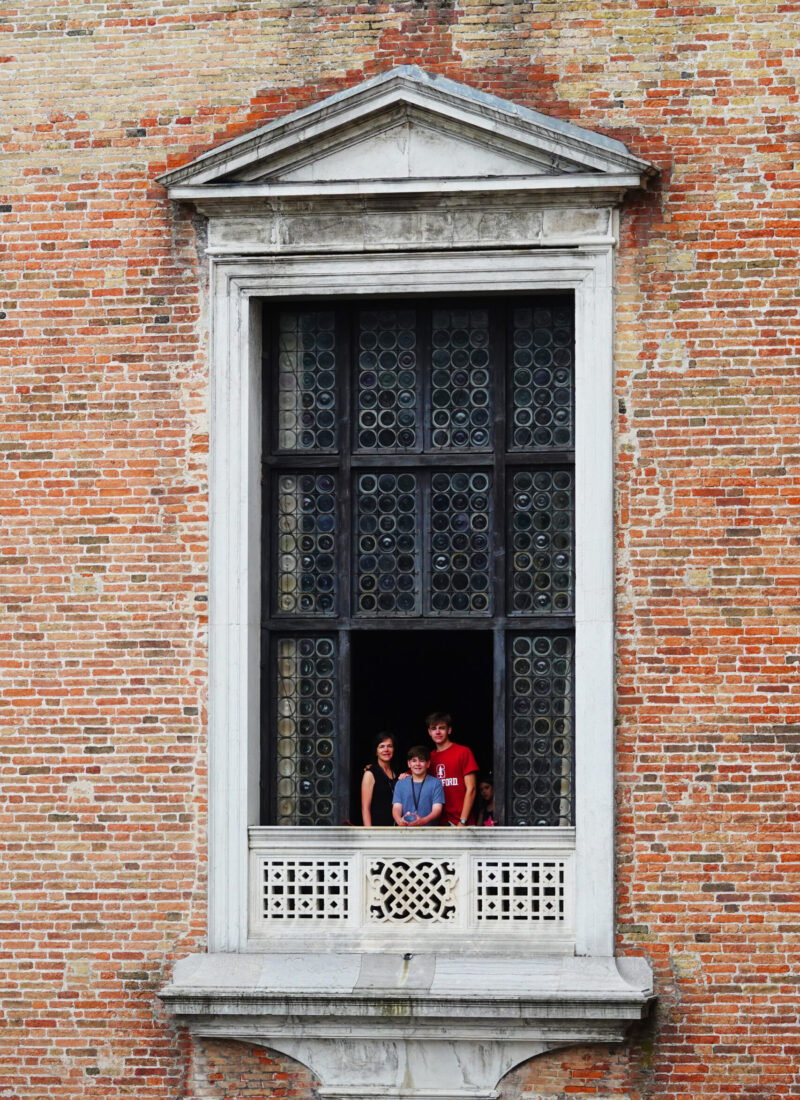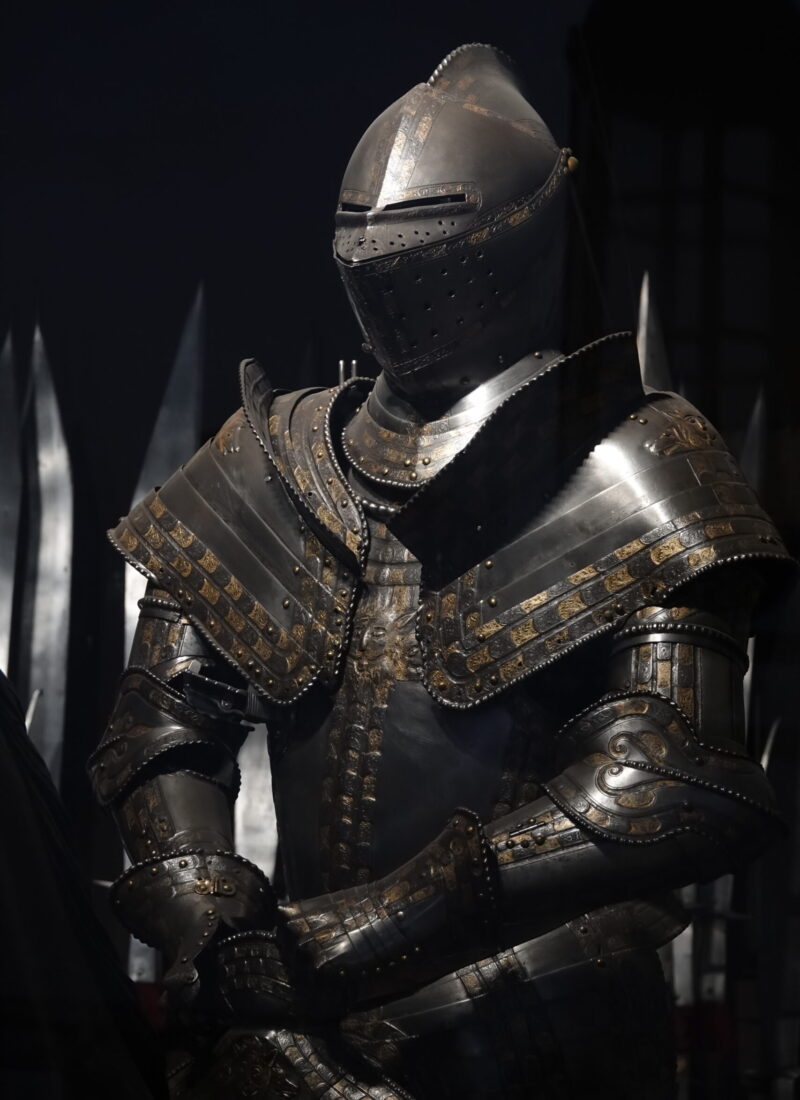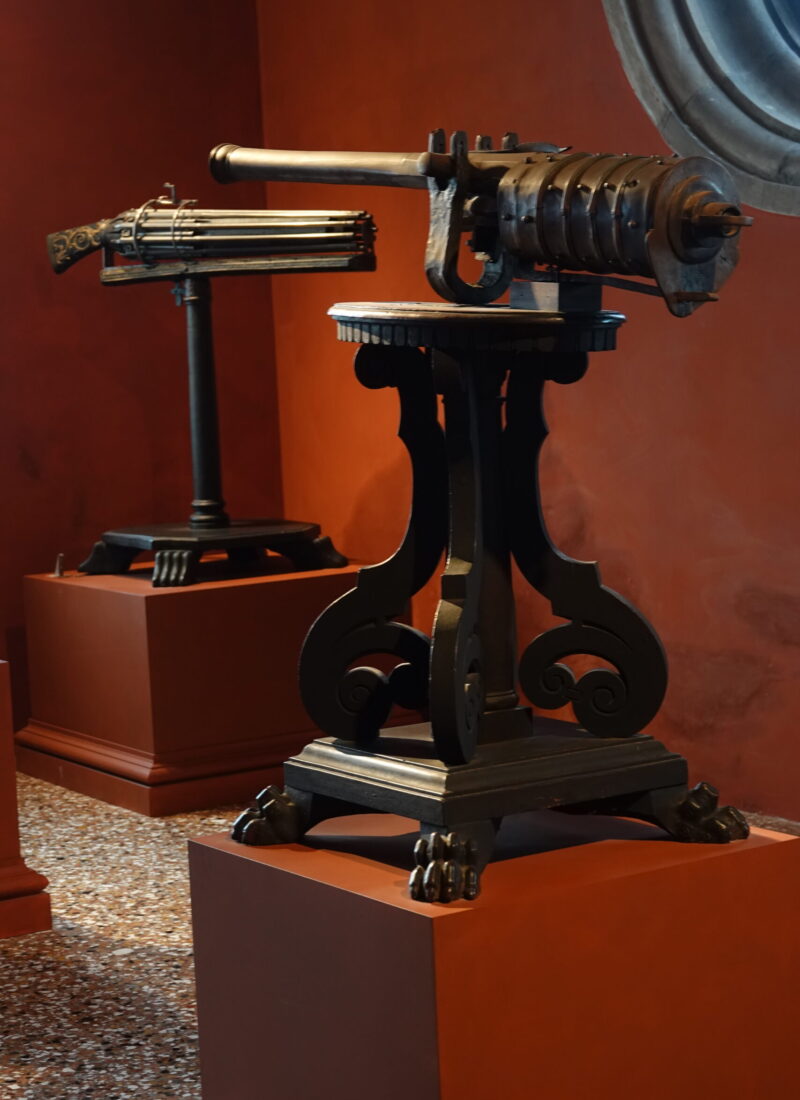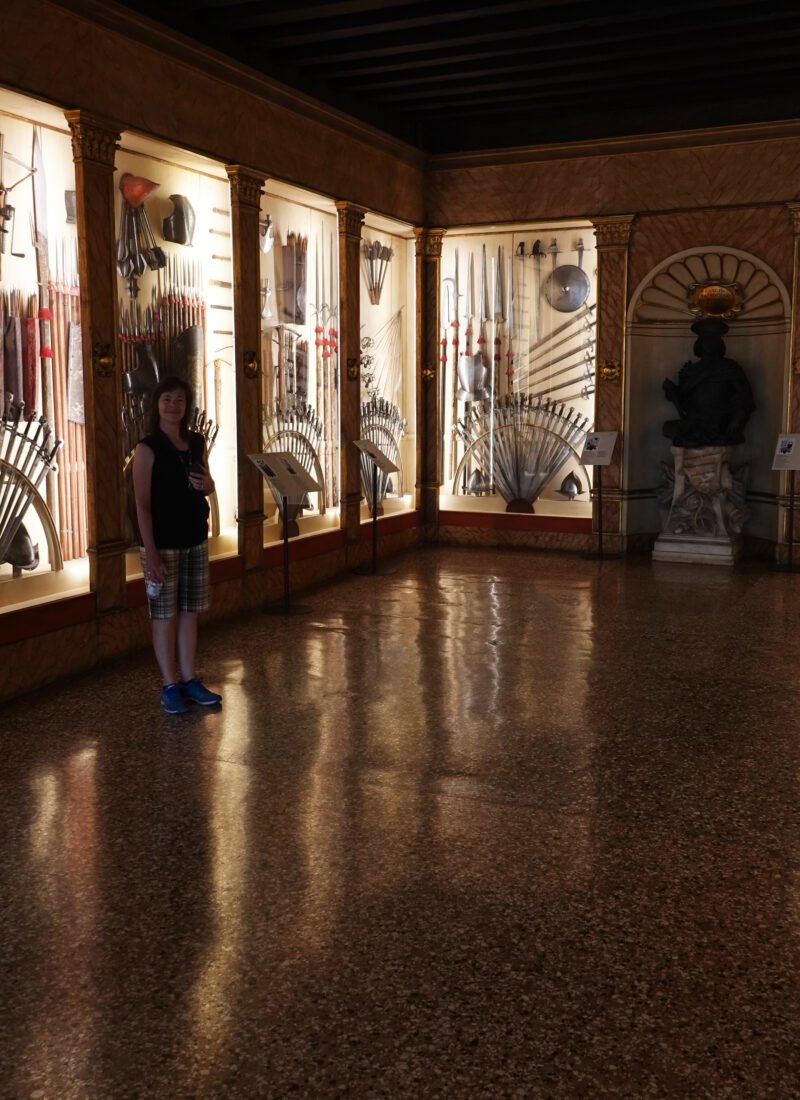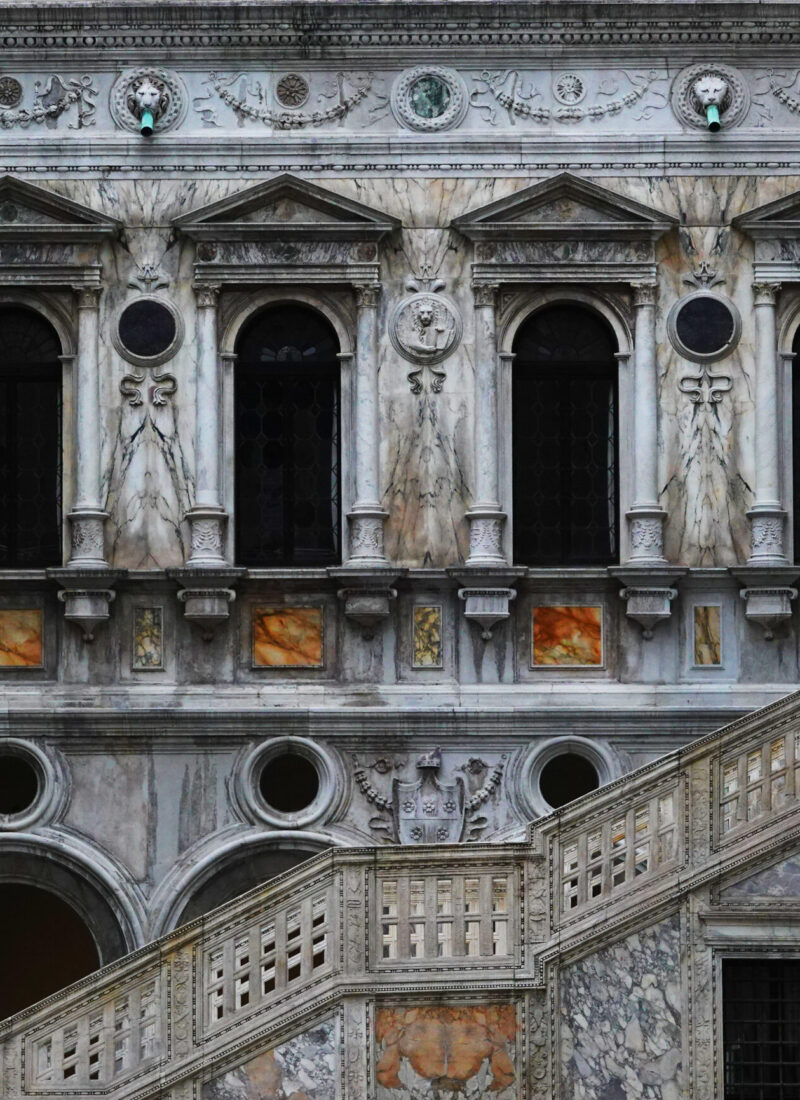What is a Doge? A Doge roughly translates to ‘Duke’ in English and comes from ‘Dux’ in Latin meaning ‘Leader’. The Doge was selected by the ruling families of Venice and was the highest administrator in the Venetian state. He was appointed for life with the first Doge being appointed in 697 and the last being deposed by Napoleon in 1797.
Where are we on our road trip through Northern Italy?
Milan ➔ Como ➔ Sirmione ➔ Verona ➔ VENICE ➔ Murano ➔ Burano ➔ Modena/Hombre ➔ Vernazza ➔ Pisa ➔ Florence ➔ San Gimignano ➔ Volterra ➔ Siena ➔ Assisi ➔ Civita di Bagnoregio ➔ Orvieto ➔ Mostri Park ➔ Sorrento ➔ Pompeii ➔ Herculaneum ➔ Amalfi ➔ Rome ➔ Malpensa
When in Venice you MUST visit the Doge’s Palace or Palazzo Ducale. Sure its touristy. Sure there are lines. But, the history and artwork on display is fantastic.
Here is how you do it …
Get in there as early as possible before the tours arrive and the palace gets noisy and crowded. Walking through it really is a place to reflect on an era gone by. Its best to soak it in when it is relatively quiet. Elaborate staircases, frescoed walls, artifacts, gilded ceilings, ancient weapons, prison cells, even views out the windows have more room to breath and with less crowds you can appreciate things close up as well as further away to take in the scale.
We took the 8:30am Doge’s Palace Self-Guided Tour (w/ Audio). You rent the audio separately from the entrance ticket and you need to leave an Id when you pick them up. Why the 8:30am?, well apart from a lack of crowds, it gives you just enough time to see the palace before walking the 13 minutes to the 2.5hr long FREE WALKING TOUR of Venice that starts at 11am (Yes it is free, but it is well worth it and tip the guide at least 5-10 euros per person in your group depending on how much you liked it. They have to eat too you know ㋛ ).
Tickets can be booked online up to 3 months in advance, and there are is always a plethora of different discounts and conditions and times to be aware of (Ticket full price: 25.00 euro, Ticket reduced price: 13.00 euro for Children aged from 6 to 14; students aged from 15 to 25; visitors over 65; holders of the Venice Rolling Card; holders of ISIC – International Student Identity Card) .. you see what I mean!
Also pay particular attention to times. If you want a guided tour then certain languages only leave at certain times and that could be a problem if you have other places you need to be on your calendar for the day. Also there can be tour size limits and you may miss out on your English spoken tour if it is already filled. We elected to do the self guided tour as we could set our own pace and didn’t need to wait for larger ‘guided’ tours to leave.
Look at the OFFICIAL SITE for the most up to date information.
Things we thought you shouldn’t miss ..
Arcade Statues by Filippo Calendario
These gothic arcades on an open square on the ground floor were built in 1340 by Fillio Calendrario.
Interesting fact: Calendario plotted with Venice’s 55th Doge, Marino Faliero, to take full control of Venice. The plot failed and Calendrio was sentenced to death in 1355 by the Venetian authorities.
The Prisons
Known as I Pozzi (the wells), and the Piombi on the other side of the river. The Pozzi were old, cold and damp and the Piomobi were newer and were populated by what we call ‘White Collar’ criminals of today, those that were political or commercial in nature who had shorter sentences. The Bridge of Sighs was built to connect the palace and the prison and is accessed via the Sala del Maggior Consiglio.
Interesting fact: Remember the story of Casanova? He was imprisoned here!
The Doge’s Private Apartments
This is where the Doge lived and has 10 rooms filled with ornate ceilings, paintings and other artwork. Beautiful.
Interesting fact: When he was first appointed as Doge he would transfer all of his furniture and belongings from his private residence and they would only be removed by his family on his death for the next Doge to then furnish.
Great Council Chamber (Sala del Maggior Consiglio)
This room was destroyed by fire in 1577 but rebuilt more lavishly over teh next 15 years. Here is where the great council of members (males over 25 years old of the top Venetian families) would discuss contracts, public finances and other public sentencing for those convicted of wrong doing. Keep a special eye out for one of the largest oil paintings ever painted, ‘Il Paradiso’ by Tintoretto hanging on the rear wall that would overlook the council.
Bridge of Sighs (Ponte dei Sospiri)
This is one of the most well known bridges in history and most view it from the outside. But, did you know you can cross through it from the Palace on one side to the prison cells on the other? The bridge was built in 1600 and is called ‘The Bridge of Sighs’ due to the sounds of despair that prisoners would make crossing it. The bridge was necessary as the Doge wanted prisoners to be kept outside the palace in a separate building on the other side of the Rio di Palazzo.
The Council of Ten (The Sala del Consiglio dei Dieci)
The Council of Ten was setup in 1310 after the 55th Doge Faliero conspired to overthrow the government. It had enormous powers and met in total secrecy and was like a modern day spy service. The Council met here and kept track of the other branches of government by reading letters between the branches of government.
Interesting Fact: During a trial statements from all parties were read and nobody was allowed to enter during a trial. A decisions was made by a vote of the Ten that had to have a 80% majority to pass.
Armory (L’Armeria)
Armor, swords, halberds, quivers, cannon, and crossbows from the 14th century readily available to the palace guards. You will see inscribed or painted on various weapons ‘CX’ (for ‘Council of Ten’) demonstrating the influence they had.
Interesting fact: Palace guards were joined by Arsenalotti on important occasions. The Arsenalotti worked at the Arsenal which was the heart of the naval industry of Venice from the XII century on and developed new and improved firearms and weapons. When a Doge died, gates to the Palace and Bell Tower were sealed and placed under the guard of the Arsenalotti.
Hopefully this wil help you out a bit on your next visit to the Doge’s Palace.
Have fun!


